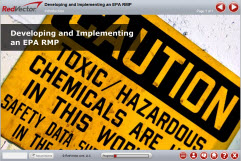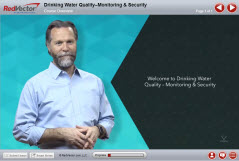Developing and Implementing an EPA RMP
0 hrs. Online Course
Level: Fundamental
Average Rating: (198)
Item #: RV-10511
SME: Shilui Mahmud, PhD
Level: Fundamental
Average Rating: (198)
Item #: RV-10511
SME: Shilui Mahmud, PhD
|
Inactive Course! We apologize, this course is no longer available. A similar course may be available in our library. |
NOTE: State license renewal information is provided as a convenience only and is subject to change at any time. It is the ultimate responsibility of the individual to be sure that he or she is meeting continuing education requirements for each license and corresponding renewal period. Information above was pulled on Saturday, July 27, 2024.






